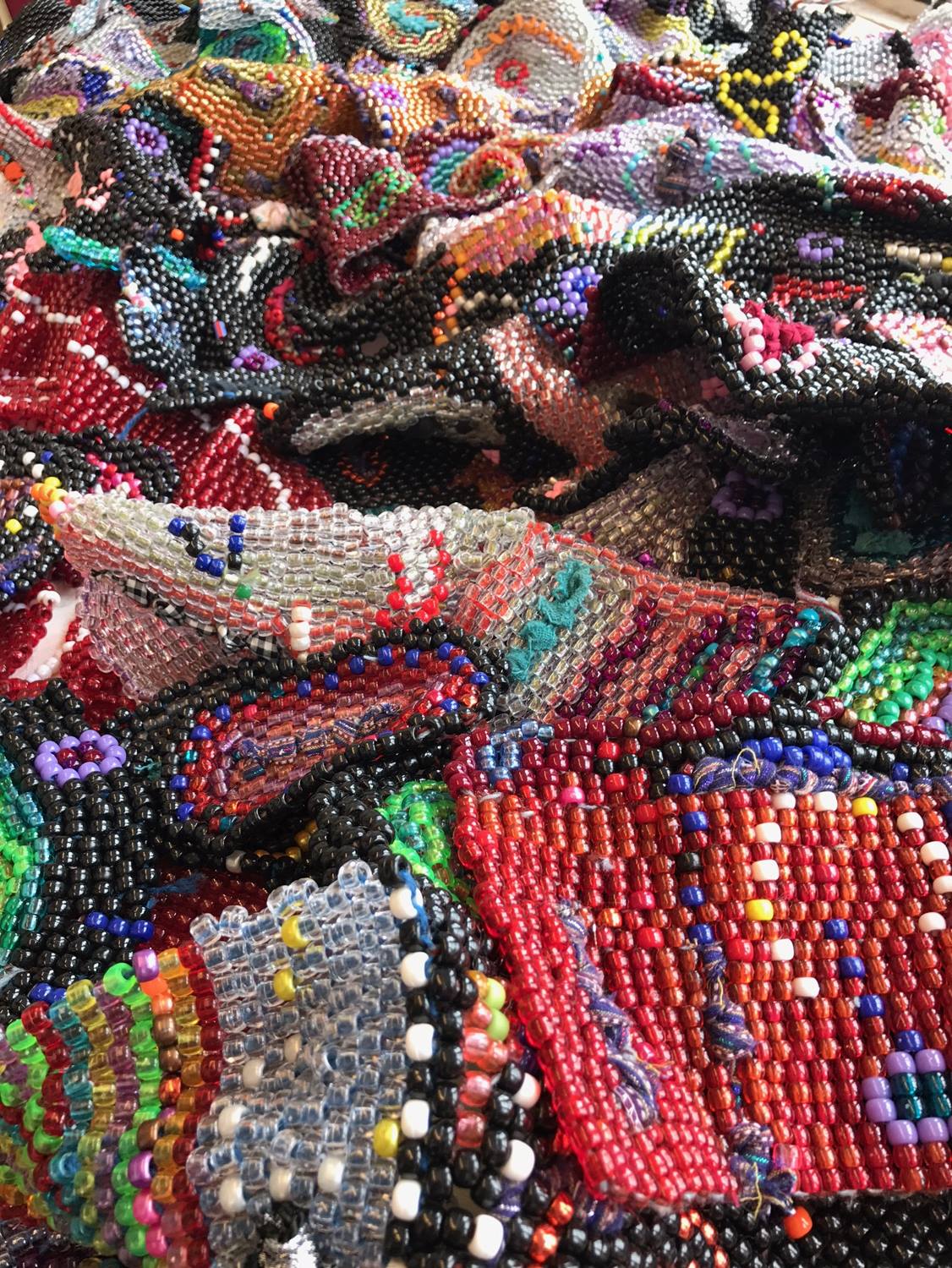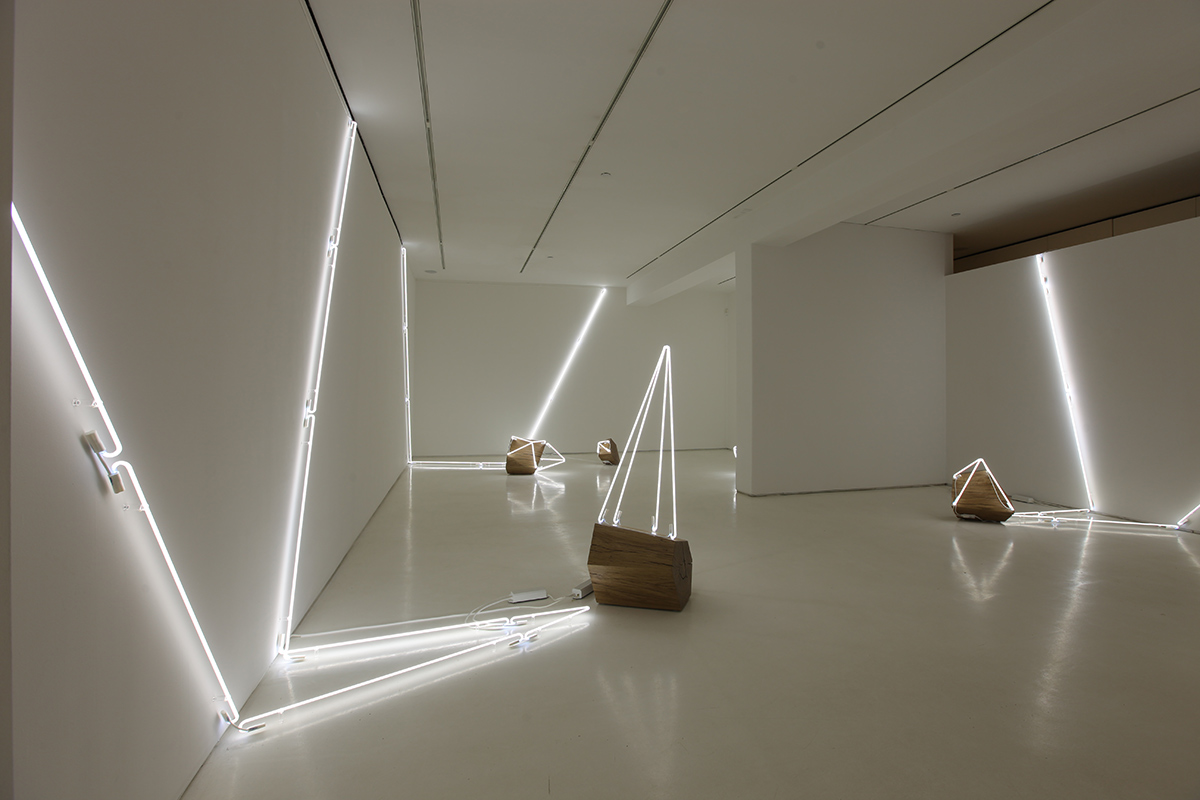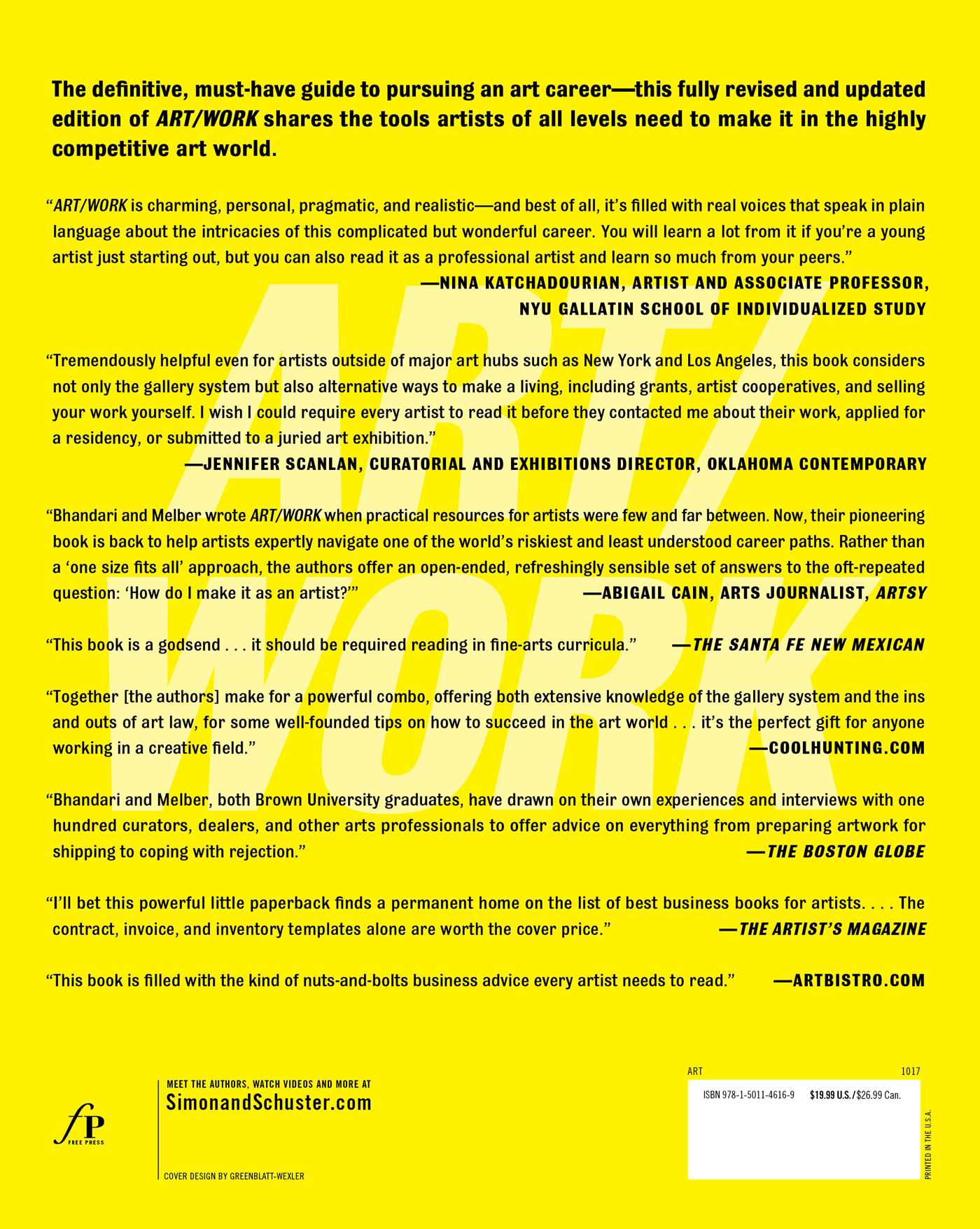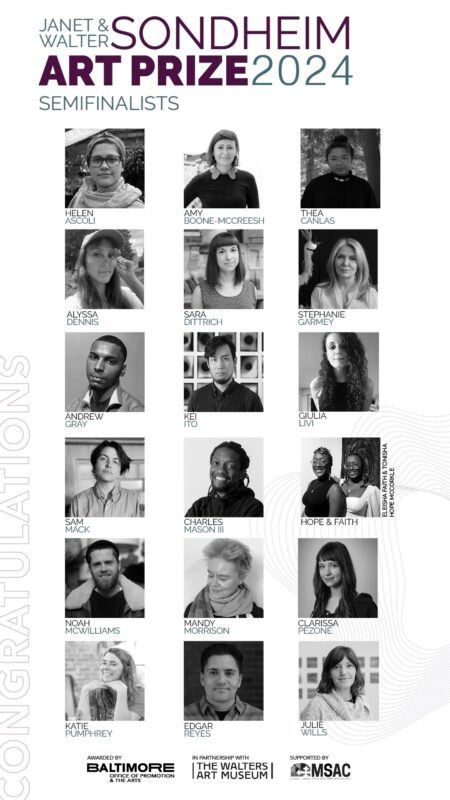ReModel Speaker Series March 29: An Introduction by Cara Ober
For many artists, the relationship between the artist and art gallery is a dream within an enigma wrapped inside a mystery. How do you get a gallery show? What are the rules of engagement? How do you create a relationship with a gallery that goes beyond contracts and transactions, and work together to build a career? How do you know when it’s time for the relationship to end?
On Thursday, March 29 BmoreArt will host two art world experts on the artist-gallery relationship as part of our Re-Model Professional Development Series. The talk is sponsored by the Robert W. Deutsch Foundation and Hotel Indigo, and is free with a RSVP (we have just a few tickets left!) and hosted at The Motor House.
I have known both curators for over a decade and feel strongly that, on the topic of the best practices for art galleries, there are few more ethical or generous then Amy Eva Raehse of Baltimore’s Goya Contemporary and Heather Darcy Bhandari, author of Art/Work, former curator at Mixed Greens gallery in Chelsea (now closed), and now a NY-based independent curator.
Both women came to their work via an art practice and both hold MFA degrees. Both advocate for artists in unique and creative ways, far surpassing their roles within commercial enterprise to volunteer, advise, author, and build community and a market for artists.
I detest reading a guest speaker’s bio aloud and wasting precious time during a lecture, so consider this an official introduction! I look forward to jumping into a conversation on stage based on the questions posed by BmoreArt’s readers.
 Joyce J. Scott with Amy Raehse
Joyce J. Scott with Amy Raehse
 Heather Darcy Bhandari, and at R, with Mixed Greens team
Heather Darcy Bhandari, and at R, with Mixed Greens team
BmoreArt: How and why did you come to be gallerists, advocates for artists, and curators?
Heather: I got an MFA and started working in galleries because I needed a job. This led to a redefinition of who I could be and how I could participate in the art world. Instead of making the work, I would help to produce and show the work. I found that to be extremely challenging, exciting, creative, and rewarding. I worked at commercial galleries Sonnabend, Lehmann Maupin, and then 15 years at Mixed Greens (all in NYC). During that time, I published the 1st edition of Art/Work because there were so many things that I learned from working in commercial galleries that I wanted to share with artists.
When Mixed Greens closed in 2016, I jumped the fence to the nonprofit world and worked for a year as the Director of Exhibitions at Smack Mellon in Brooklyn. That’s when the second edition of the book was published (Oct 2017) and I left my job to pursue independent curating, teaching, writing, and a new initiative called The Remix with two former colleagues. We curate–we have an exhibition up right now that includes a Baltimore artist, Alex Ebstein, at Trestle Gallery in Brooklyn–and record a yet-to-be-released podcast about new models in the art world.
HOT OFF THE PRESSES: I am also working on a new residency project at NYU. It’s a mentorship model that I’m really excited about and wish I could participate (application is open!).
Amy: I’m not sure I can answer this in a short or concise way. There are multifarious reasons, and in my mind those are three different roles–which is to say each professional ‘classification’ developed for different reasons, however, what they all share is a desire for protecting, preserving, interpreting, analyzing, and creating space for the cultural legacy that provides context by which we understand the world today, while unearthing knowledge, dialogue and thinking around the integrity of objects.
I’ve worked in the museum, not-for-profit, commercial, and academic sectors of the arts. I’ve remained an independent curator, advisor, Trustee, and lecturer on professional practices at various colleges and universities because these settings are quite different yet inform each other. Curating over 100 exhibitions and placing artworks in major public and private collections worldwide including MoMA, the Smithsonian(s), the BMA, Philadelphia Museum of Art, The MET, Chrysler Museum, Toledo Museum, Museum of Arts and Design, The Bunker, among countless others, I have come to realize the essential role objects play in constructing meaning and intimacy around topics where words will not do.
Most recently, I co-produced the largest retrospective to date for MacArthur Fellow Joyce J. Scott (represented by Goya Contemporary) with Grounds For Sculpture in New Jersey. I’ve produced similar large scale projects, such as Timothy App’s 45-year survey at Katzen Museum. These projects satisfy many of my goals for pedagogy, career advancement, and legacy protection for artists with whom I work, so they have become one of my priorities moving forward.
 Goya Contemporary with work by Joyce J. Scott
Goya Contemporary with work by Joyce J. Scott
What do you think the most important strategy is for an artist in achieving success?
Amy: Take an active role in your career. Do the work. Be professional.
Make art that is authentic and sensitive to your experience, and then if you wish for it to have a larger public dialogue, be part of that community. Research. Apply. Be present. Question. Expose. Observe. Look at other artists’ work. Make a network– not a social media network– but a network of artists and institutions with whom you wish to grow.
Art in the world is an intimate exchange of ideas that reflect the human condition, so first you have to be part of life. You need to be the visual anthropologist that experiences, interprets, and perhaps reconciles all that is around you, and then all that is uniquely inside you. You have to be part of it, and you have to do the work. Don’t get hung up on what you have not done. Instead, go into your studio and move forward rather than become paralyzed by what you did not do, know, or get. To be taken seriously, you must be serious about doing the work.
Heather: Be dedicated to your studio practice and active in your community. All good opportunities come from good work and trusted personal connections. Take yourself seriously and others will too.
 Mixed Greens window project with work by Amy Boone-McCreesh
Mixed Greens window project with work by Amy Boone-McCreesh
What is your personal mantra or code of ethics? How do you decide what to say yes to and what to say no to?
Heather: Although I am not a religious person, I have the old biblical “do unto others as you would have them do unto you” seared into my head. On a more base level, if I get a sick feeling (not a wow! this is challenging feeling but an actual sick feeling) in my stomach because I don’t trust the person or the ethics, I don’t do it.
Another way I vet opportunities came to me through my discussion with Charles Long for the book.
To say yes to something, I must answer yes to at least 2 of these questions:
1. Is the money good?
2. Will it benefit my career or deepen my professional experience?
3. Will it be personally fulfilling?
If the ethics are questionable, I can’t confidently say yes to #2 or #3.
Amy: I hope our discussion Thursday will allow us to elaborate on this question. In general, I approach all aspects of my job as questions to be answered, problems to be solve, and knowledge to gain and impart through respect, integrity, dignity, and through best practices that protects the artist and their contributions to society. I am in partnership with the artist, so we succeed or we do not succeed together.
 Kim Beck exhibition at Mixed Greens
Kim Beck exhibition at Mixed Greens
More Info:
Amy Eva Raehse is Executive Director and Curator of Goya Contemporary Gallery which represents emerging and mid-career artists in an international program focused on Post-War and Contemporary Art in both primary and secondary markets. She has curated over 100 exhibitions and has placed artworks in major public and private collections worldwide including MoMA, the Smithsonian(s), the BMA, Philadelphia Museum of Art, The MET, Chrysler Museum, The Whitney Museum, The Bunker, among countless others. For more than 20 years, Raehse has also remained an independent curator, taught at a number of Colleges and Universities, and lectures extensively on professional practices.
A consultant and advisor to many organizations, Raehse is on the Board of Directors at The Creative Alliance of Baltimore, and the Programming Advisory at Maryland Art Place. She has juried myriad platforms including The Ruby’s and Light City, and has authored exhibition catalogue essays and articles in several publications. A member of the Association of Print Scholars and the International Fine Print Dealers Association, Raehse holds a MFA, BFA, and Certificate in Arts Management. A New Yorker by birth but a Baltimorean by choice, Raehse has worked in Museum, not-for-profit, commercial, and academic sectors of the arts. Most recently, Raehse co-produced the largest retrospective to date for MacArthur Fellow Joyce J. Scott (represented by Goya Contemporary) with Grounds For Sculpture in New Jersey.
 Goya Contemporary with Jo Smail exhibition
Goya Contemporary with Jo Smail exhibition
Heather Darcy Bhandari is an independent curator and co-founder of The Remix (a project-based curatorial team), an adjunct lecturer at Brown University, and a consultant to several for-profit and nonprofit arts institutions. The second edition of her book, ART/WORK, was published by Simon and Schuster in October of 2017.Bhandari also lectures and participates in portfolio reviews and panel discussions across the country.
She is on the board of directors of visual arts at Art Omi (an artist residency in Ghent, NY) and the advisory boards of artfcity (an online, art-related publishing platform), CODIFY Art (a multidisciplinary collective of QTPOC artists), and Trestle Gallery in Brooklyn. She was on the board of NURTUREart for nearly a decade. From 2000 to 2016 she was a director of Mixed Greens, a commercial gallery where she curated over one hundred exhibitions while managing a roster of nearly two-dozen emerging to mid-career artists. Most recently, she was the Director of Exhibitions at Smack Mellon, a nonprofit in Brooklyn. Bhandari received a BA from Brown University and an MFA from Pennsylvania State University. Her career began at contemporary galleries Sonnabend and Lehmann Maupin, both in New York City.
Originally published in 2009, Art/Work was the first practical guide to address how artists can navigate the crucial business and legal aspects of a fine art career. But the rules have changed since then, due to the proliferation of social media, increasing sophistication of online platforms, and ever more affordable digital technology. Artists have never had to work so hard to distinguish themselves—including by making savvy decisions and forging their own paths. Now Heather Bhandari, with over fifteen years of experience as a director of the popular Chelsea gallery Mixed Greens, and Jonathan Melber, a former arts/entertainment lawyer and director of an art e-commerce startup, advise a new generation of artists on how to make it in the art world…

More on Goya Contemporary:
Goya Contemporary promotes the art and culture of our time by presenting new work and ideas through curatorial practice, catalogues, print publishing, artist representation, and by encouraging artistic collection. Goya Contemporary has earned international acclaim for thought-provoking exhibitions, innovation programming, and unique collaborations with artists. Known nationally as one of the most prestigious and long running galleries in the mid-Atlantic, as well as one of the few with membership in established ethical art institutions such as the IFPDA, Goya is dedicated to scholarly programming, which fosters the work of mid-career artists.
Top Image: Mixed Greens Gallery, NY with work by Keith Lemley
RESERVE YOUR TIX HERE! Come early and have a drink or bite to eat with us around 5:30 at The Showroom, the bar & cafe at Motor House. Or hang out after.









